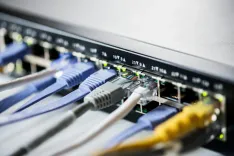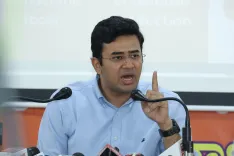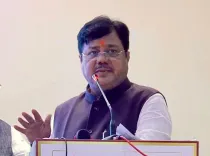Will 30% of STEM Graduates in India Join the AI-Enabled Workforce by FY26?

Synopsis
Key Takeaways
- 30% of STEM graduates expected to join AI workforce by FY26.
- Shift towards AI-led skilling prioritizes adaptability and innovation.
- India needs 1 million AI professionals by 2026.
- Tier 2 and Tier 3 cities are fostering entrepreneurship.
- Investment in inclusive education is vital for future success.
New Delhi, July 14 (NationPress) Approximately 30% of students graduating in the fields of Science, Technology, Engineering, and Mathematics (STEM) in India are expected to enter the artificial intelligence (AI)-powered workforce by the conclusion of FY26, as stated in a recent report.
The report, released by talent solutions firm NLB Services, emphasizes the growing importance of AI in shaping India's future work landscape.
It indicates a significant transition from conventional education methods to innovative, AI-driven skill development that focuses on adaptability, creativity, and real-world problem-solving.
“As home to one of the world’s largest collections of STEM graduates, India is transforming its strengths into a digital advantage. With over 2.55 million students completing their STEM degrees annually, the potential to establish a future-ready, AI-integrated workforce has never been more optimistic,” remarked Sachin Alug, CEO of NLB Services.
“Out of this number, around 30% are projected to secure positions directly associated with AI by the end of FY26, underscoring the central role AI plays in India's evolving work paradigm,” he added.
As the nation celebrates a decade of the Skill India Mission, its impact is visible across the spectrum—from urban centers to smaller towns—where young individuals are acquiring practical, job-ready abilities such as AI/ML engineering, cybersecurity, and cloud engineering, according to Alug.
Furthermore, India is forecasted to need around 1 million AI experts by 2026, highlighting the urgency of this movement, he noted.
Additionally, Tier 2 and Tier 3 cities are emerging as hubs of entrepreneurial activity, where young Indians are not just seeking jobs but also creating them. They are utilizing AI tools to establish businesses, address local issues, and engage in the global market.
To fully harness this potential, it is crucial to invest in inclusive, accessible skill development models and foster robust public-private collaborations, Alug stated.
The report suggests that the transition from Skill India to a $10 trillion digital-first economy relies on equipping every young Indian with the resources to lead in the future of work, rather than merely participate.









